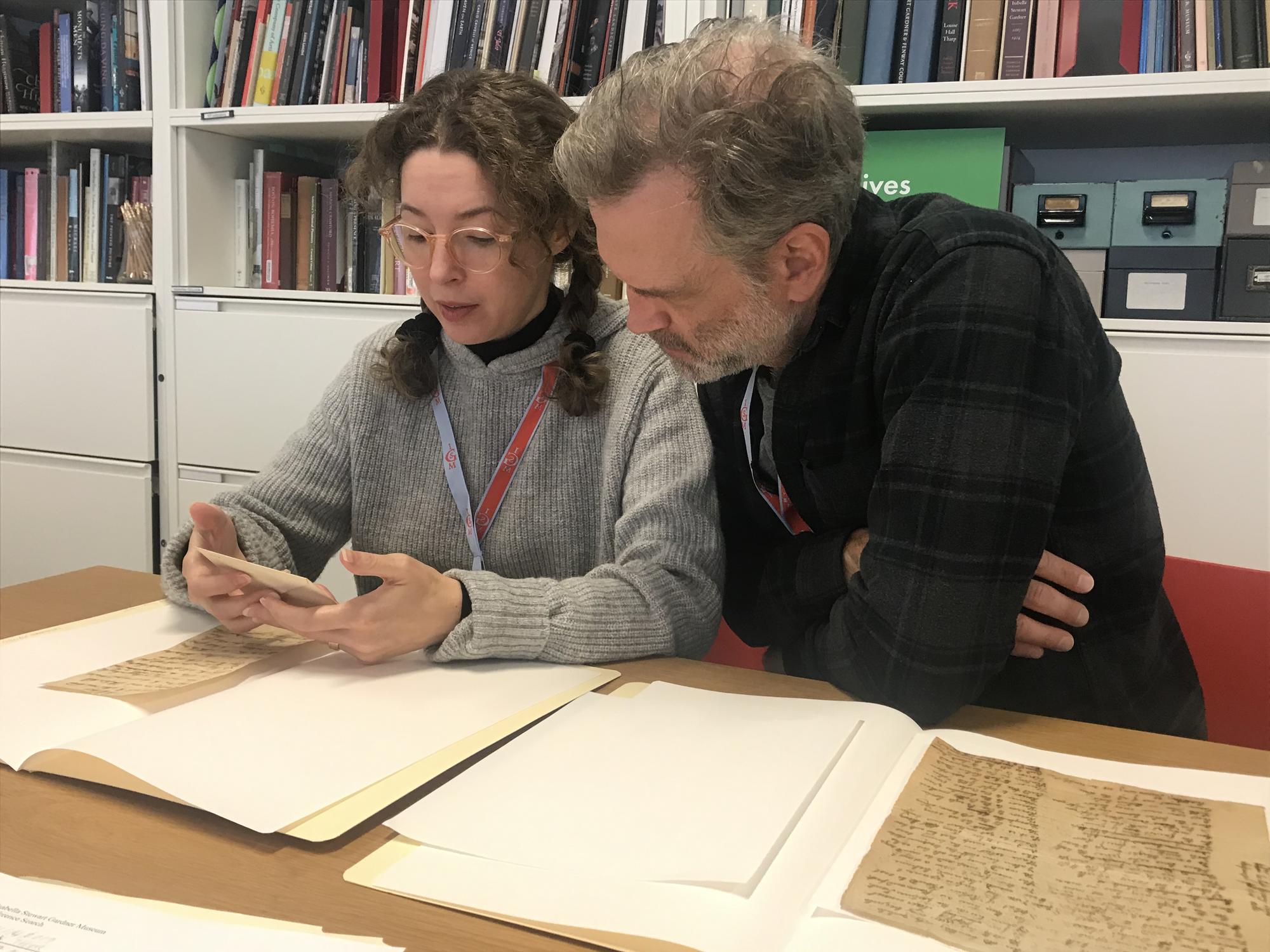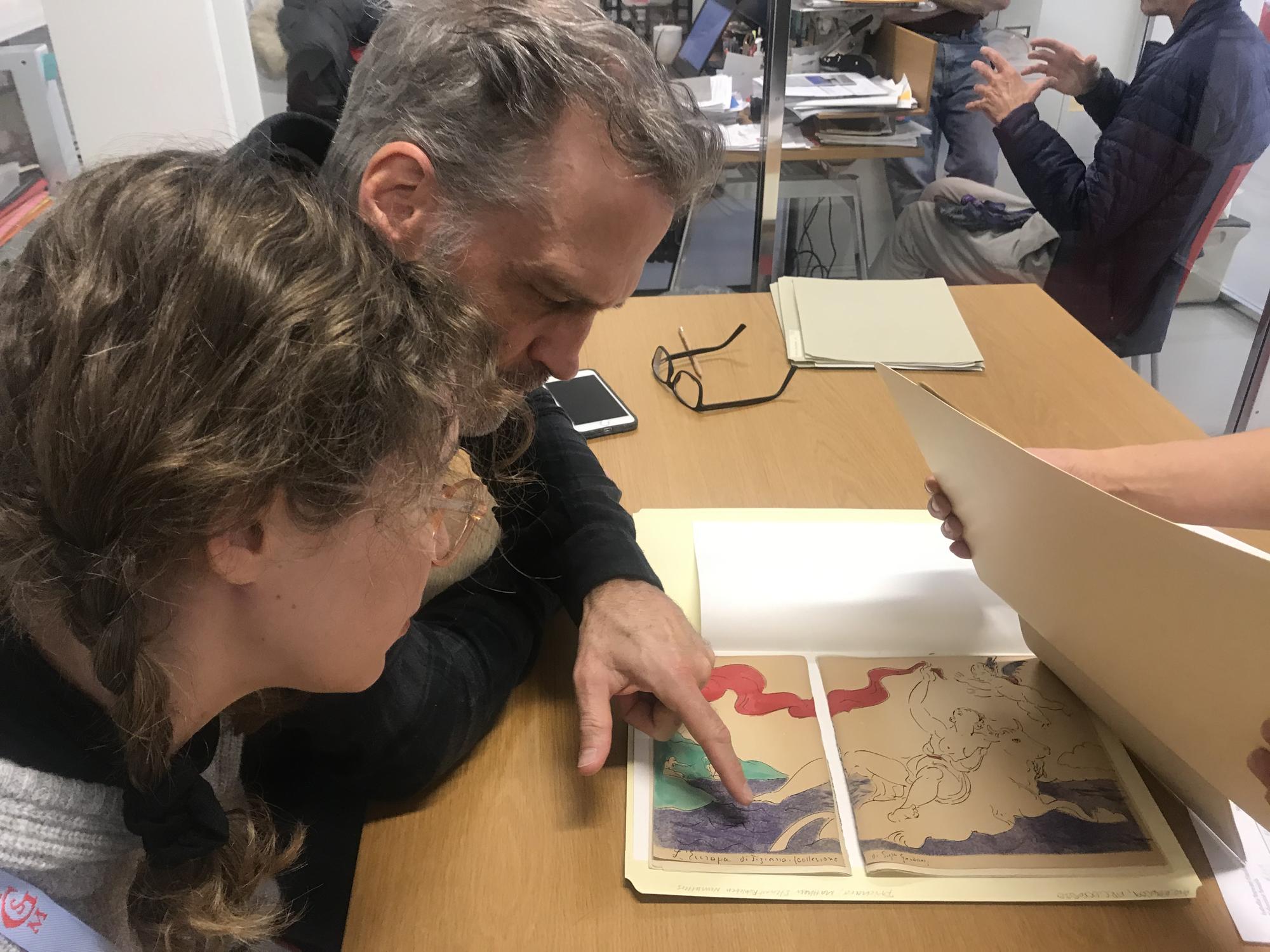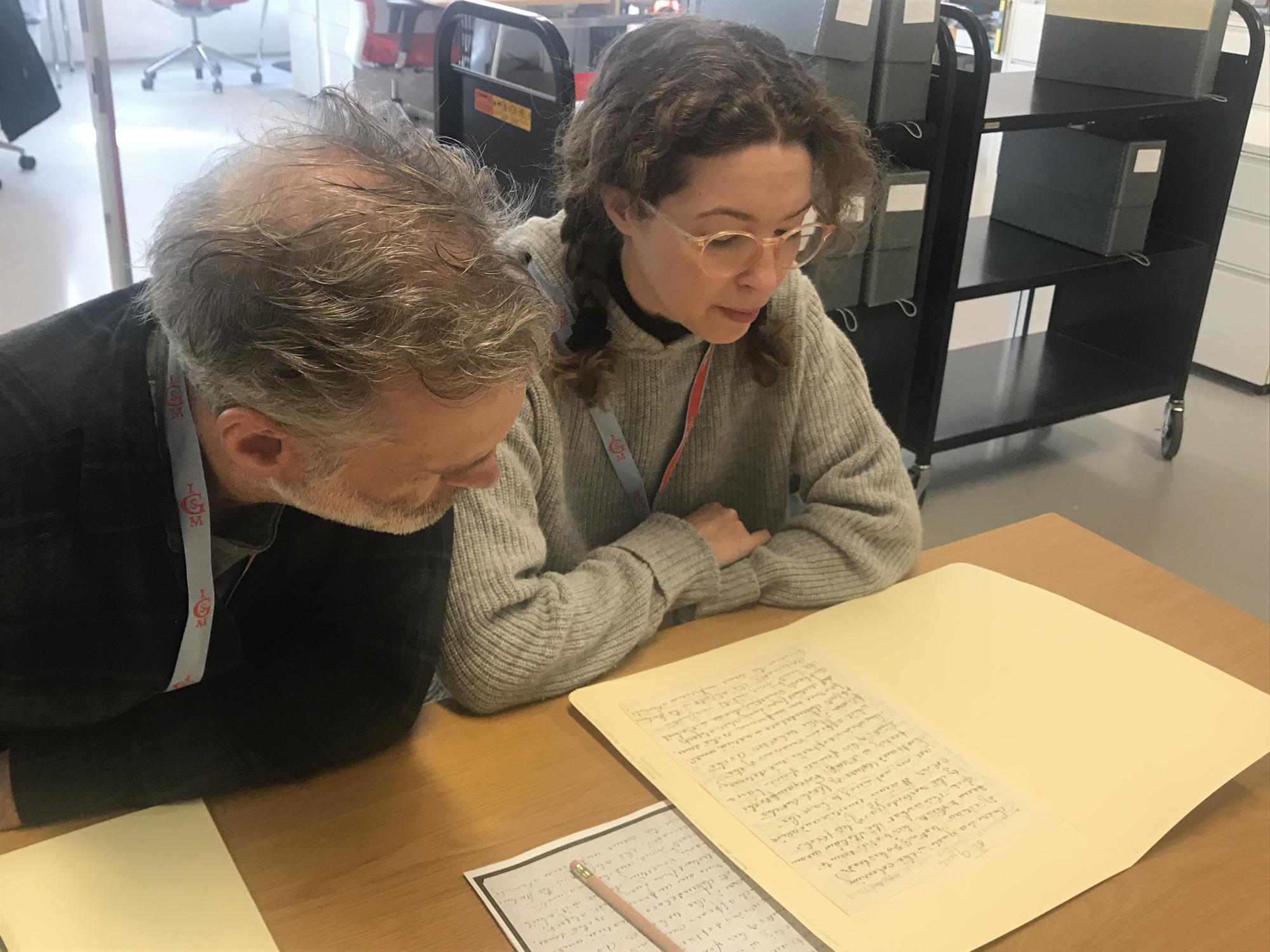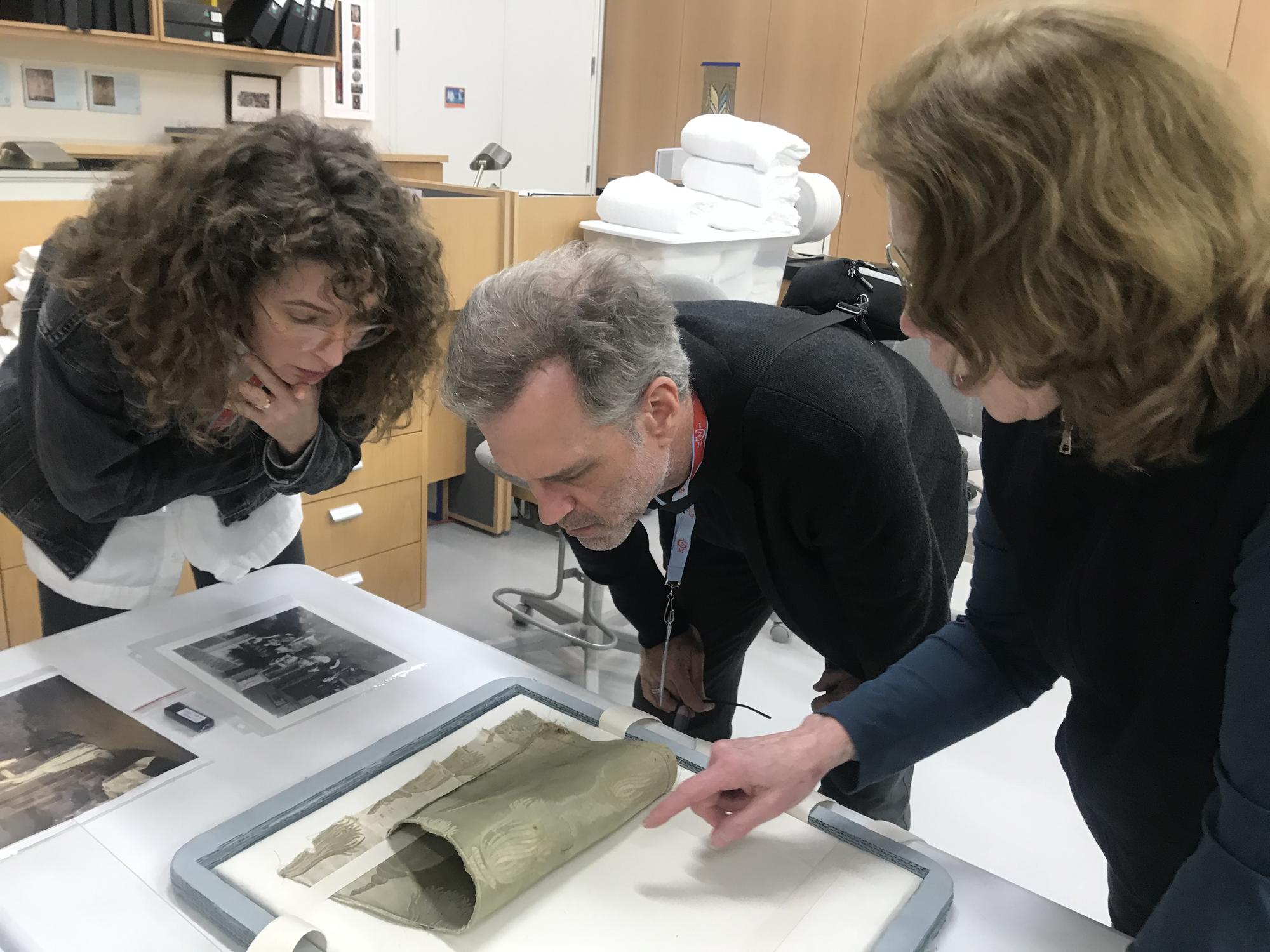Since 2008, painter Mary Reid Kelley has worked in collaboration with videographer Patrick Kelley on a series of ambitious videos filled with playful wordplay, elaborate costumes, and sets of her own creation. History, language and literature always inform their work. Mary Reid Kelley fuses classical drama, performance, myth, literature, and pop culture into the structured poetic verse of her scripts as she reassesses standard historical narratives. The characters are played by the artist herself. She employs slapstick and satire to give life to her observations on gender, class, and the condition of women throughout history. The characters in the videos take on a wide variety of roles ranging from a nurse to a wartime sex worker, to a Greek goddess. The videos are filmed in live action and stop animation with highly stylized black and white costumes, props, and scenery that are reminiscent of comics or the art-historical styles ranging from Cubism to German Expressionism.
The Mary Reid Kelley came to the Gardner in November 2019 to spend time in the collection and to intensely research Titian’s painting the Rape of Europa, which Gardner purchased in 1896. This is the last in a series of six paintings, called poesie, commissioned by King Phillip II of Spain and based on the Classical myths of Ovid’s ‘Metamorphoses’. In the painting Europa is being abducted by Jupiter disguised as a bull. The conflict between gender stereotypes placed on women and the realities of their struggle throughout history are the underlying thematics of Mary Reid Kelley’s work. Working with the figure of Europa, the mother of the European continent, presented an opportunity for Mary Reid Kelley to discover and amplify the voice of a woman whose personal perspective has been omitted from history.
In January 2020 Mary Reid Kelley and Patrick Kelley returned to see Titian’s painting close up in the Conservation Lab before it was packed for its trip to London.
Over the course of the month Mary and Patrick Kelley spent time in the galleries looking at how the light moved through the space. They were interested in the architecture of the courtyard and the way Gardner layered fabrics, artworks, and objects created different focal points. On their visit to the Conservation Lab they learned about Rape of Europa’s recent restoration from painting conservator Gianfranco Pocobene as well as other pieces from the Titian Room that were being cleaned on by the Objects team. The Kelley’s were also invited to join the conservators one evening in the Courtyard when they x-rayed the sculpture of Persephone in preparation for resituating her on a new pedestal. They visited the Textile lab where they learned about the restoration of the fabric wall coverings in Titian Room and examined an original fragment of a gown made by the House of Worth that Gardner famously cut apart and installed under Rape of Europa.
On November 21-23 the Museum hosted a film festival in conjunction with the exhibition In The Company of Artists. The festival included works by Gardner Museum Artists-in-Residence, Neighborhood Salon Luminaries, and local filmmakers. The Kelleys screened The Minotaur Trilogy (The Thong of Dionysus, 2015, Swinburnes’s Pasiphae, 2014, Priapus Agonistes, 2013) which explores the Greek myth of the Minotaur and, through it, the present-day roles of woman, sexuality, language, and art historical tropes. Afterwards they spoke about how the work developed and was filmed.
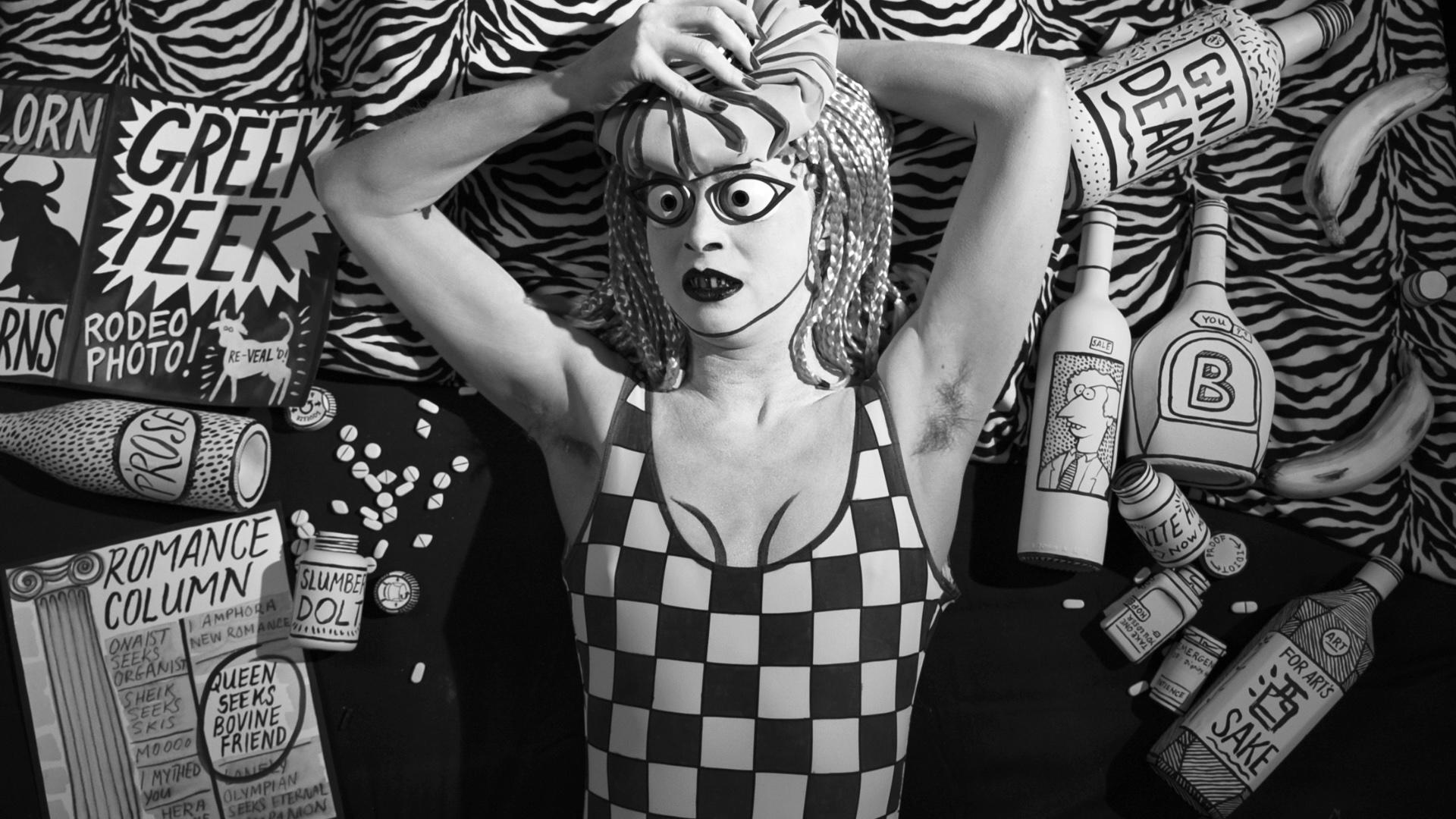
Mary Reid Kelley with Patrick Kelley, Swinburne’s Pasiphae, 2014.
Still from single-channel HD video with sound, 8:58 minute
While they were not in the Museum, Mary and Patrick spent time in the apartment working and entertaining Whistler, the Gardner’s canary, who took a vacation from the Living Room to stay with them for the month.
In January 2020 Mary Reid Kelley and Patrick Kelley returned to see Titian’s painting close up in the Conservation Lab before it was packed for its trip to London. The series of six paintings will be reunited in an exhibition that will make its way from the National Gallery in 2020 to the Isabella Stewart Gardner Museum in August, 2021. The works will be exhibited at the Gardner at the same time as the Kelley's new video will be installed in the Fenway Gallery.
Mary Reid Kelley (b. USA, 1979) received her BFA from St. Olaf College, Minnesota, and an MFA in Painting from Yale University in 2009. She is the recipient of the MacArthur Foundation Grant, has received awards from the American Academy in Rome, the Rema Hort Mann Foundation, and the Guggenheim Fellowship.
Patrick Kelley (b. USA, 1969) earned a BFA from St. Olaf College, Minnesota, and an MFA from Cranbrook Academy of Art, Michigan. His works have been exhibited at the Bibliothèque Publique d’Information–Centre Pompidou, Paris, France, the Kunsthalle Düsseldorf, Germany, and the Minnesota Museum of American Art.
Mary Reid Kelley and Patrick Kelley’s video work has been exhibited at the House of Voltaire, London (2019), Baltimore Museum of Art (2018); Tate Liverpool, Liverpool (2017); MUDAM Luxembourg (2017); The High Line, New York (2016); Museum Leuven, Leuven (2016); Kunsthalle Bremen, Bremen (2016); The Hammer Museum, Los Angeles (2015); SITE Santa Fe, Santa Fe (2015); Pilar Corrias, London (2014); Neuer Kunstverein Wien, Vienna (2014); and The Institute of Contemporary Art/Boston, Boston (2013). Their 2016 film This Is Offal won the Baloise Prize at Art Basel. They were the Keith L. and Kathy Sachs Visiting Professors in the Department of Fine Arts for the 2019 – 2020 Academic Year at the University of Pennsylvania. Between 2019 and 2021 as Artists-in-Residence at the Fabric Workshop and Museum, Philadelphia the Kelley’s have been developing Dust to Dust, a new project that explores the global crisis of climate change. They live and work in Olivebridge, NY.
